
NGC 1, also occasionally referred to as GC 1, UGC 57, PGC 564 or Holm 2a is an intermediate spiral galaxy of the morphological type Sbc, located approximately 210 to 215 million light-years from the Solar System in the constellation Pegasus. It was discovered on 30 September 1861 by Heinrich d'Arrest.

NGC 17, also known as NGC 34, is a spiral galaxy in the constellation Cetus. It is the result of a merger between two disk galaxies, resulting in a recent starburst in the central regions and continuing starforming activity. The galaxy is still gas-rich, and has a single galactic nucleus. It lies 250 million light years away. It was discovered in 1886 by Frank Muller and then observed again later that year by Lewis Swift.
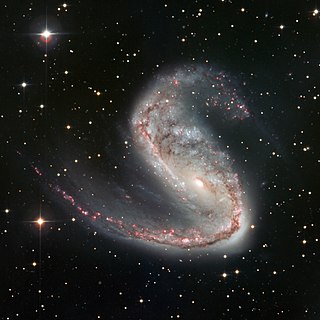
NGC 2442 and NGC 2443 are two parts of a single intermediate spiral galaxy, commonly known as the Meathook Galaxy or the Cobra and Mouse. It is about 50 million light-years away in the constellation Volans. It was discovered by Sir John Herschel on December 23, 1834 during his survey of southern skies with a 18.25 inch diameter reflecting telescope from an observatory he set up in Cape Town, South Africa. Associated with this galaxy is HIPASS J0731-69, a cloud of gas devoid of any stars. It is likely that the cloud was torn loose from NGC 2442 by a companion.
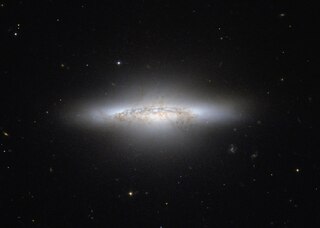
NGC 5010 is a lenticular galaxy located about 140 million light years away in the constellation Virgo. It was discovered by John Herschel on May 9, 1831. It is considered a Luminous Infrared Galaxy (LIRG). As the galaxy has few young blue stars and mostly red old stars and dust, it is transitioning from being a spiral galaxy to being an elliptical galaxy, with its spiral arms having burned out and become dusty arms. From the perspective of Earth, the galaxy is facing nearly edge-on.
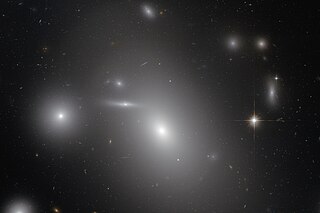
NGC 4889 is an E4 supergiant elliptical galaxy. It was discovered in 1785 by the British astronomer Frederick William Herschel I, who catalogued it as a bright, nebulous patch. The brightest galaxy within the northern Coma Cluster, it is located at a median distance of 94 million parsecs from Earth. At the core of the galaxy is a supermassive black hole that heats the intracluster medium through the action of friction from infalling gases and dust. The gamma ray bursts from the galaxy extend out to several million light years of the cluster.
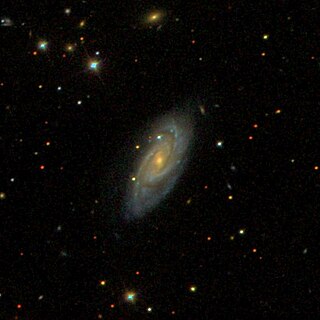
NGC 21 is a spiral galaxy in the Andromeda constellation. It was discovered by William Herschel in 1790. Lewis Swift observed it again in 1885, leading to its double listing in the New General Catalogue.

NGC 7332 is an edge-on peculiar lenticular galaxy located about 67 million light-years away in the constellation Pegasus. It possesses a -shaped bulge, associated with stellar bar. It was discovered on September 19, 1784 by the astronomer William Herschel.

NGC 1725 is a lenticular galaxy in the constellation Eridanus. The galaxy is listed in the New General Catalogue. It was discovered on November 10, 1885 by the astronomer Edward Emerson Barnard.

NGC 70 is a spiral galaxy located in the constellation Andromeda. It was discovered on October 7, 1855, by R. J. Mitchell and was also observed on December 19, 1897 by Guillaume Bigourdan from France who described it as "extremely faint, very small, round, between 2 faint stars".

NGC 151 is a mid-sized barred spiral galaxy located in the constellation Cetus.

NGC 112 is a barred spiral galaxy located in the constellation Andromeda. It was discovered by American astronomer Lewis Swift on September 17, 1885. The galaxy lies approximately 295 million light-years from Earth, and is about 75,000 light-years in diameter.

NGC 178 is a Magellanic spiral galaxy in the constellation of Cetus. The compiler of the New General Catalogue, John Louis Emil Dreyer noted that NGC 178 was "faint, small, much extended 0°, brighter middle". It was discovered on November 3, 1885 by Ormond Stone.
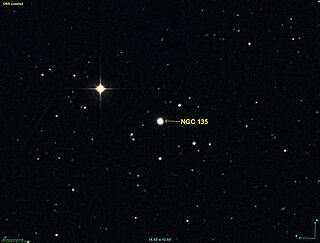
NGC 135 is a lenticular galaxy located in the constellation of Cetus and 335 million light-years away, and 40,000 light-years across.

NGC 806 is a spiral galaxy approximately 166 million light-years away from Earth in the constellation Cetus. It was discovered by American astronomer Lewis A. Swift on November 1, 1886 with the 16" refractor at Warner Observatory.

NGC 5523 is an unbarred spiral galaxy in the constellation of Boötes, registered in New General Catalogue (NGC). The galaxy forms an equilateral triangle with NGC 5641 and NGC 5466 when observed using a telescope from the ground.

NGC 5641 is a type Sb-barred spiral galaxy in the constellation of Boötes, registered in New General Catalogue (NGC). It is located five degrees east of NGC 5466.
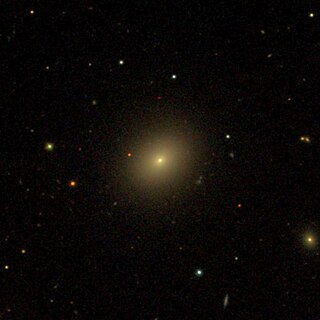
NGC 5500 is an elliptical galaxy in the constellation of Boötes, registered in New General Catalogue (NGC).
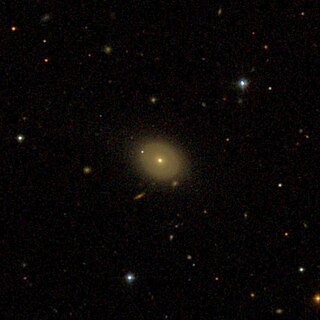
NGC 5501 is an unbarred spiral galaxy in the constellation of Virgo, registered in New General Catalogue (NGC).


















